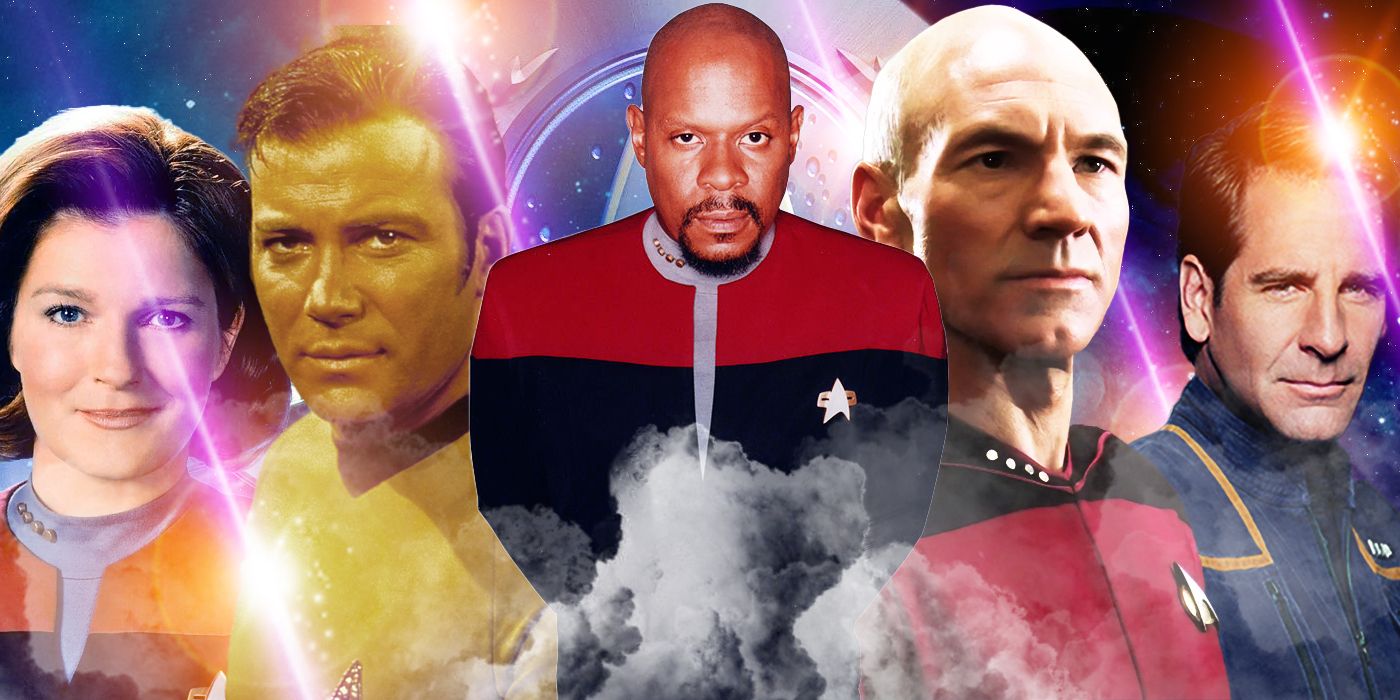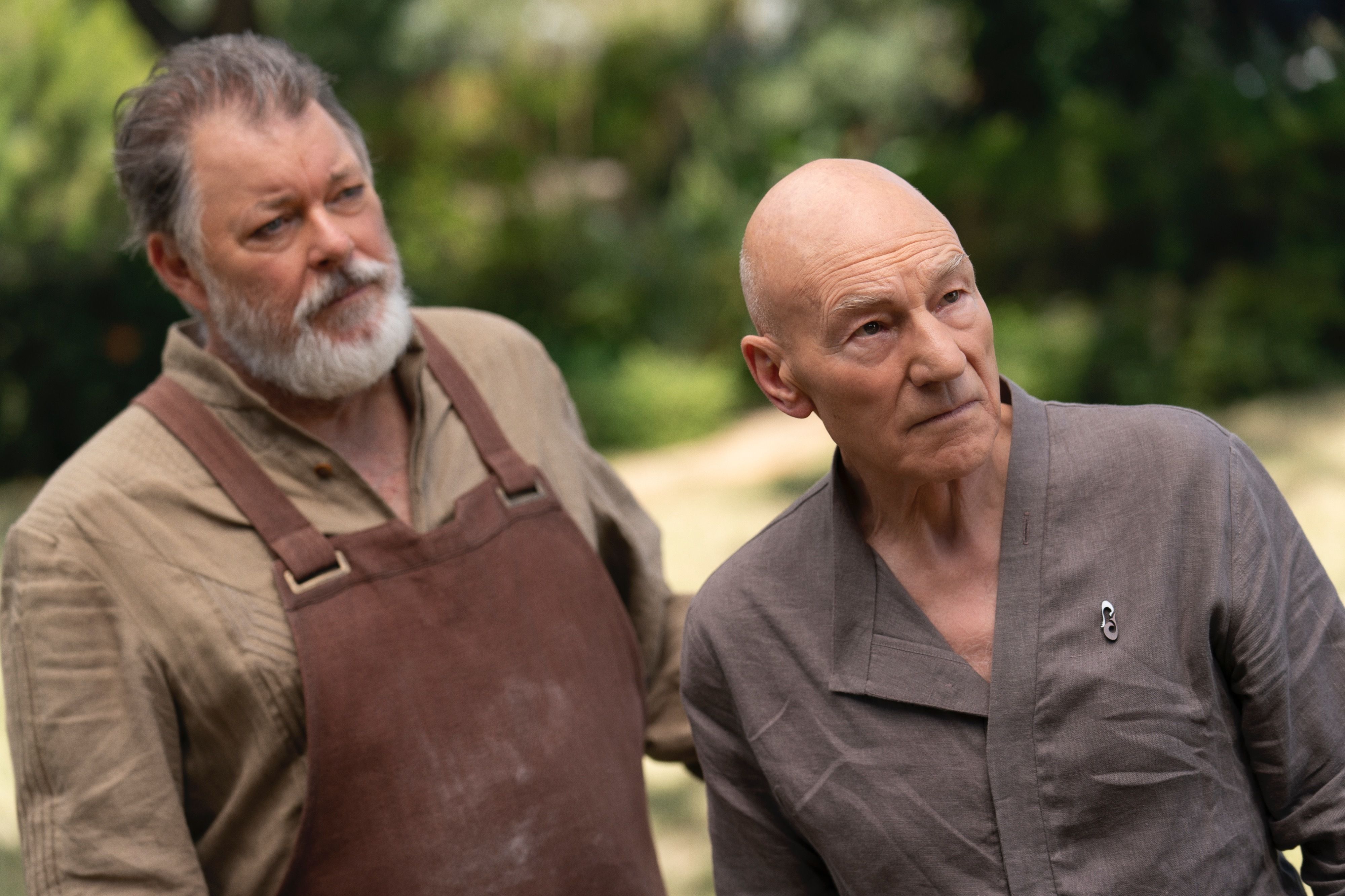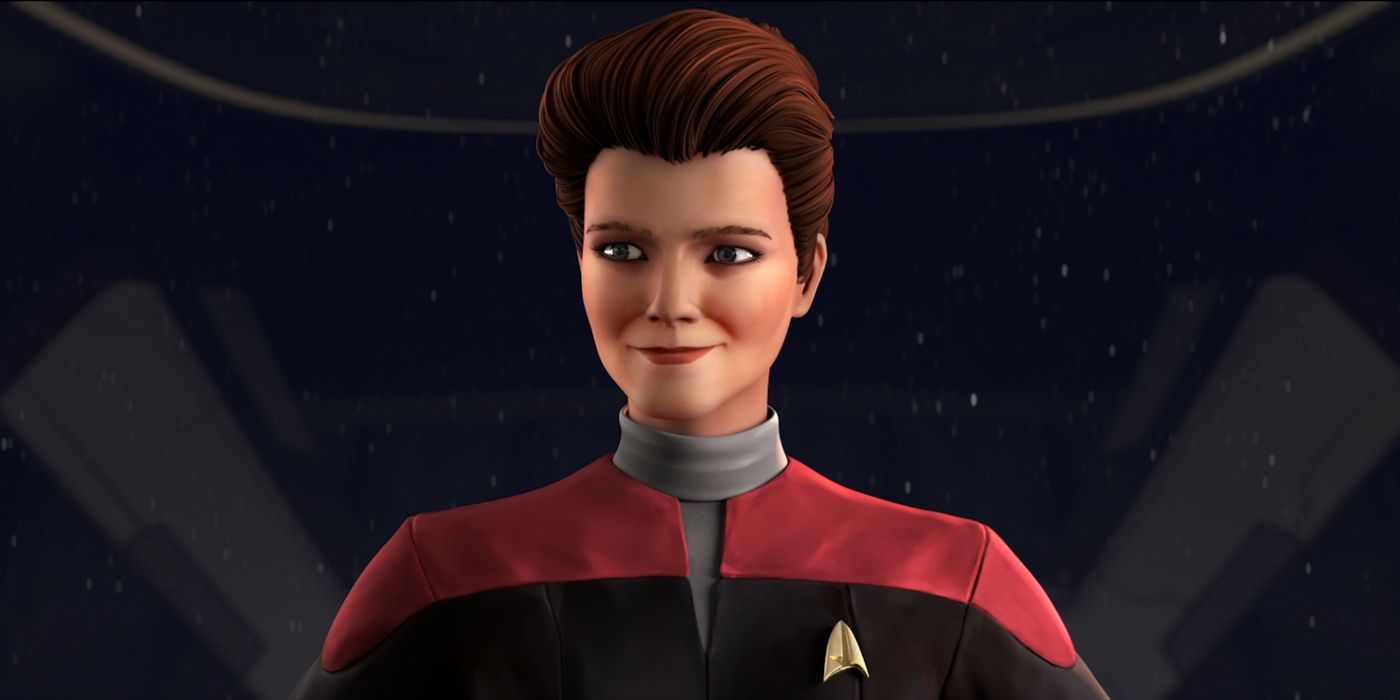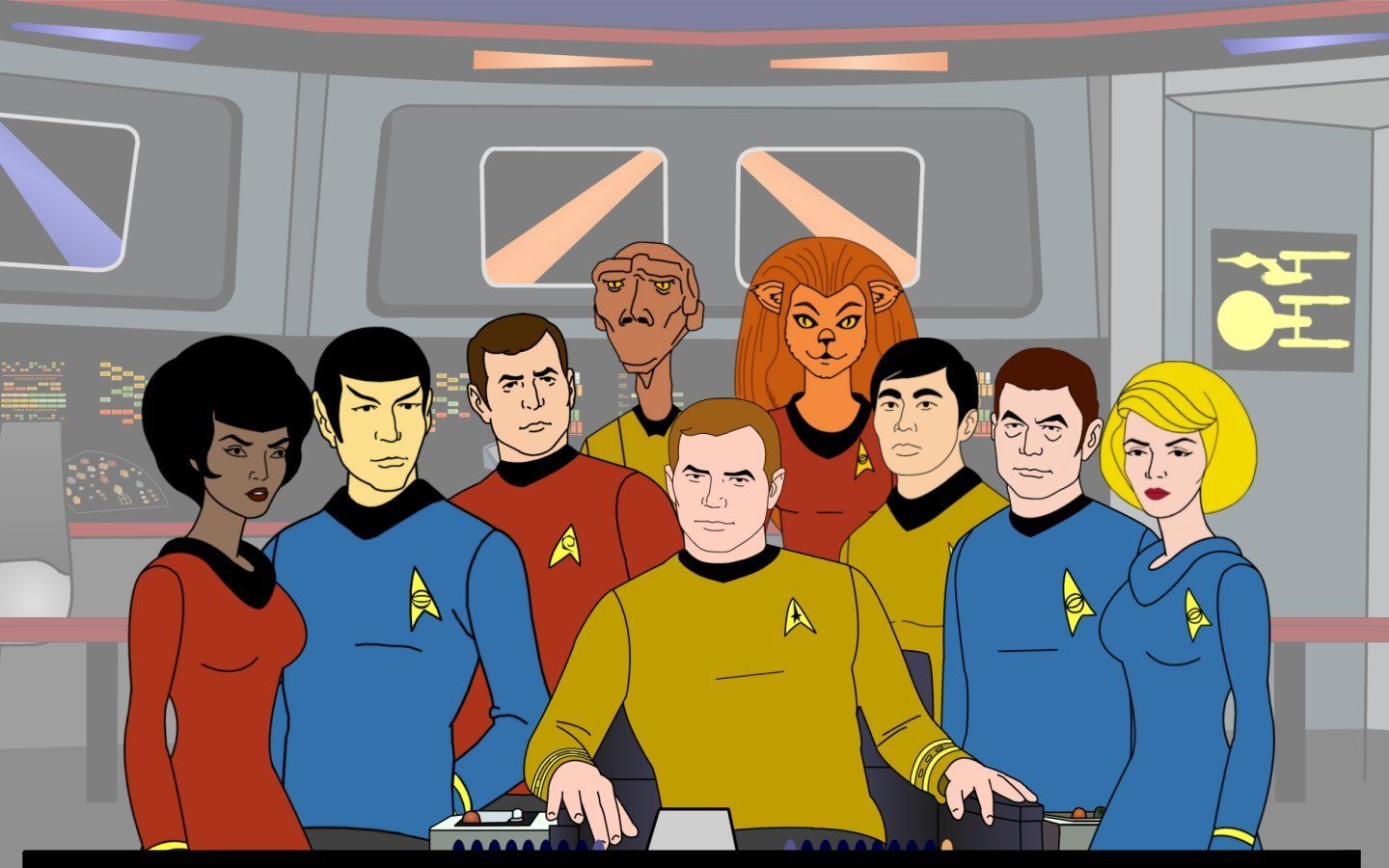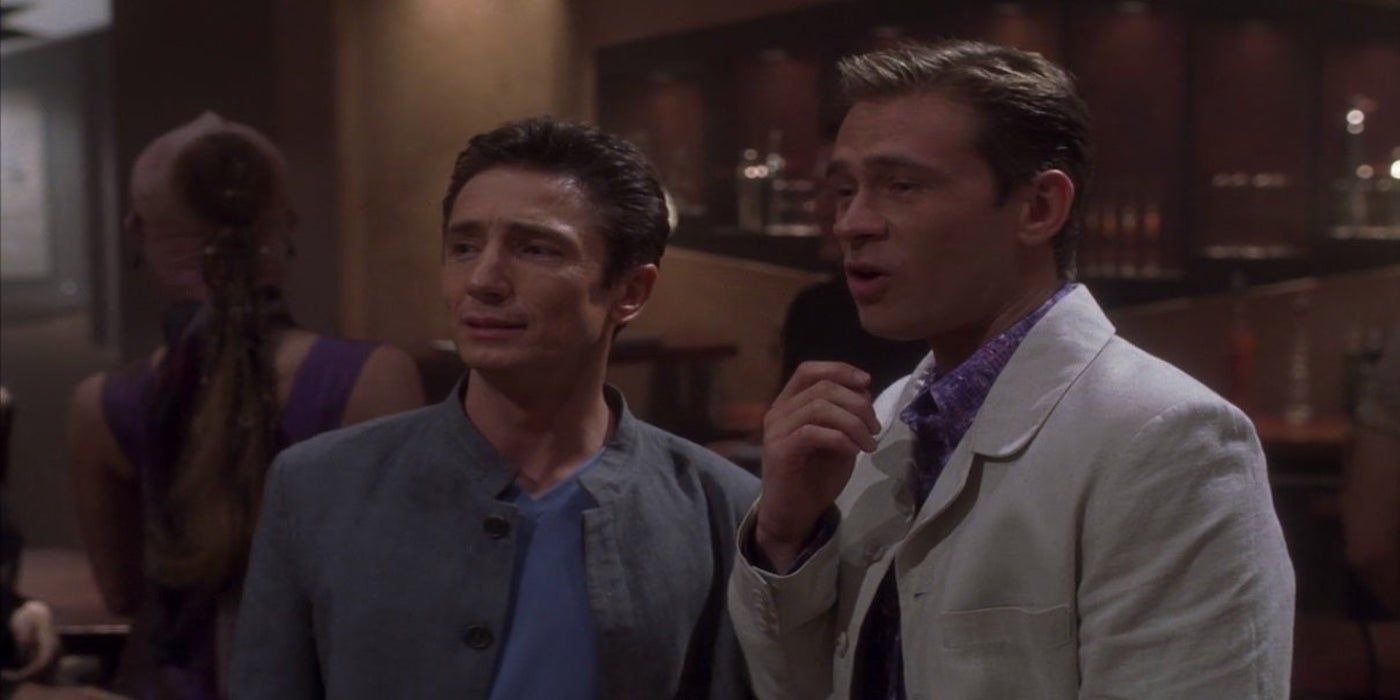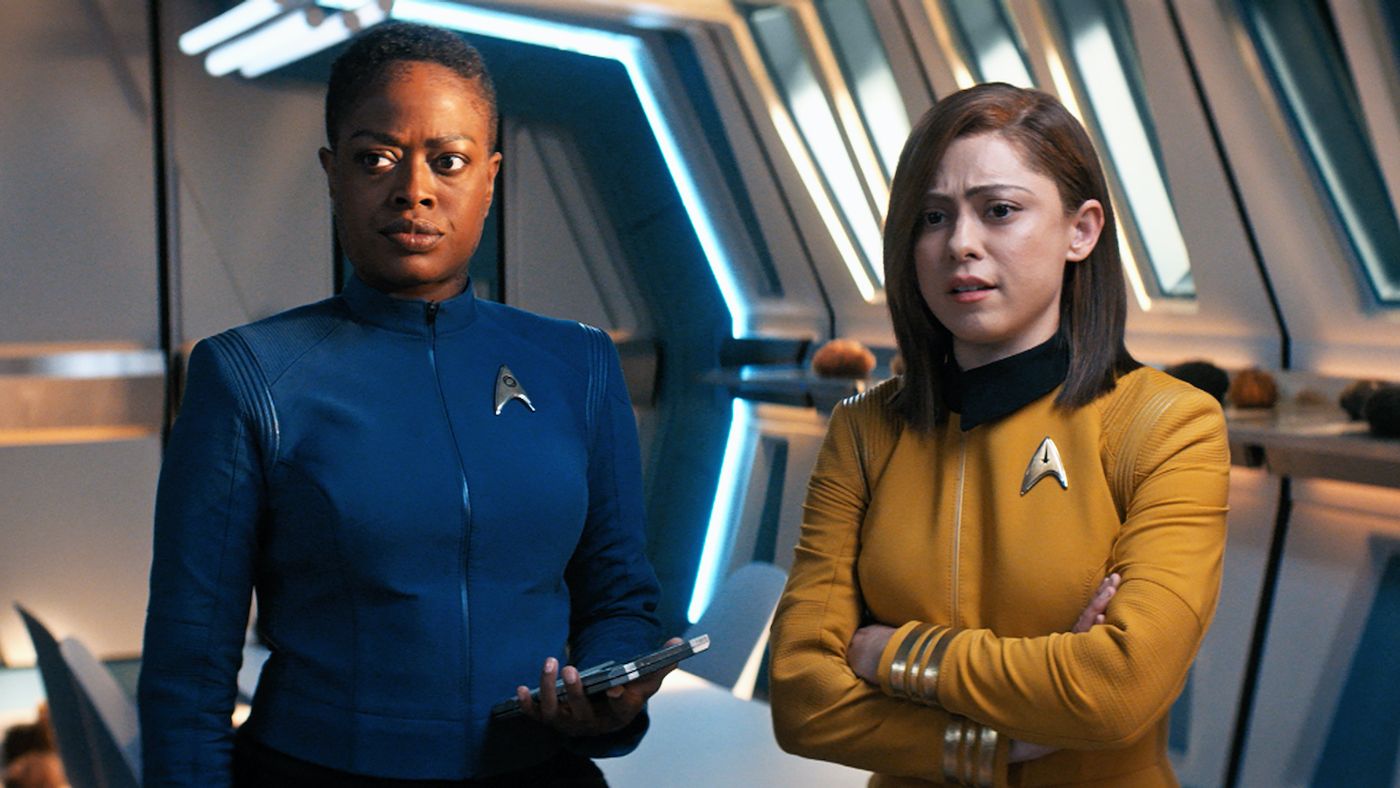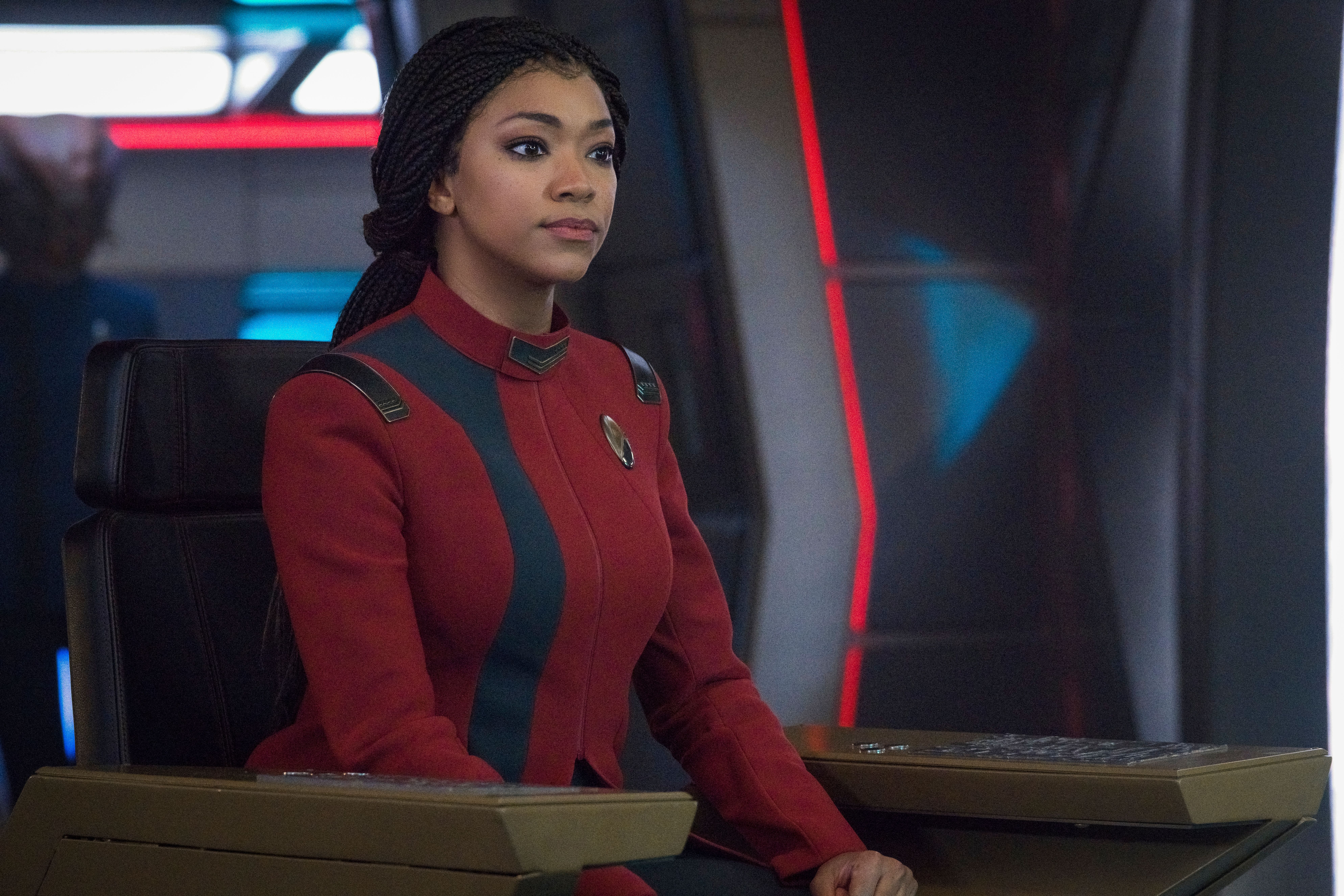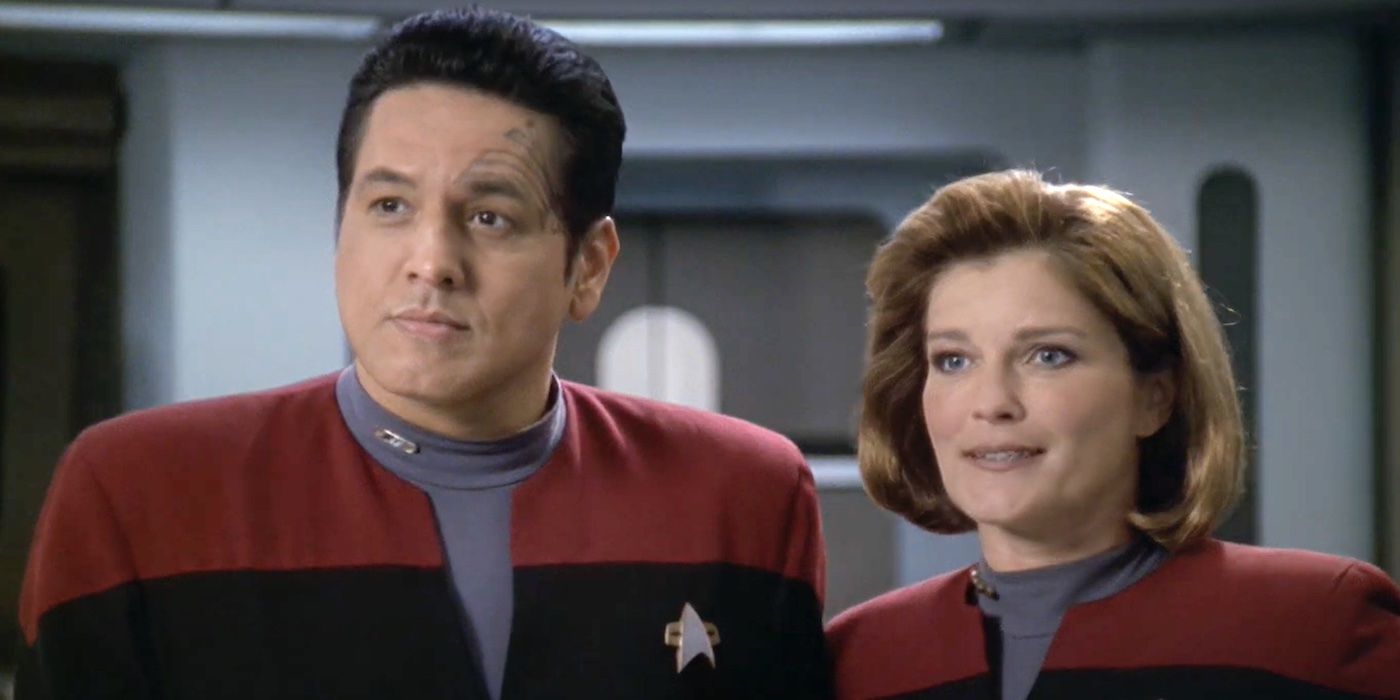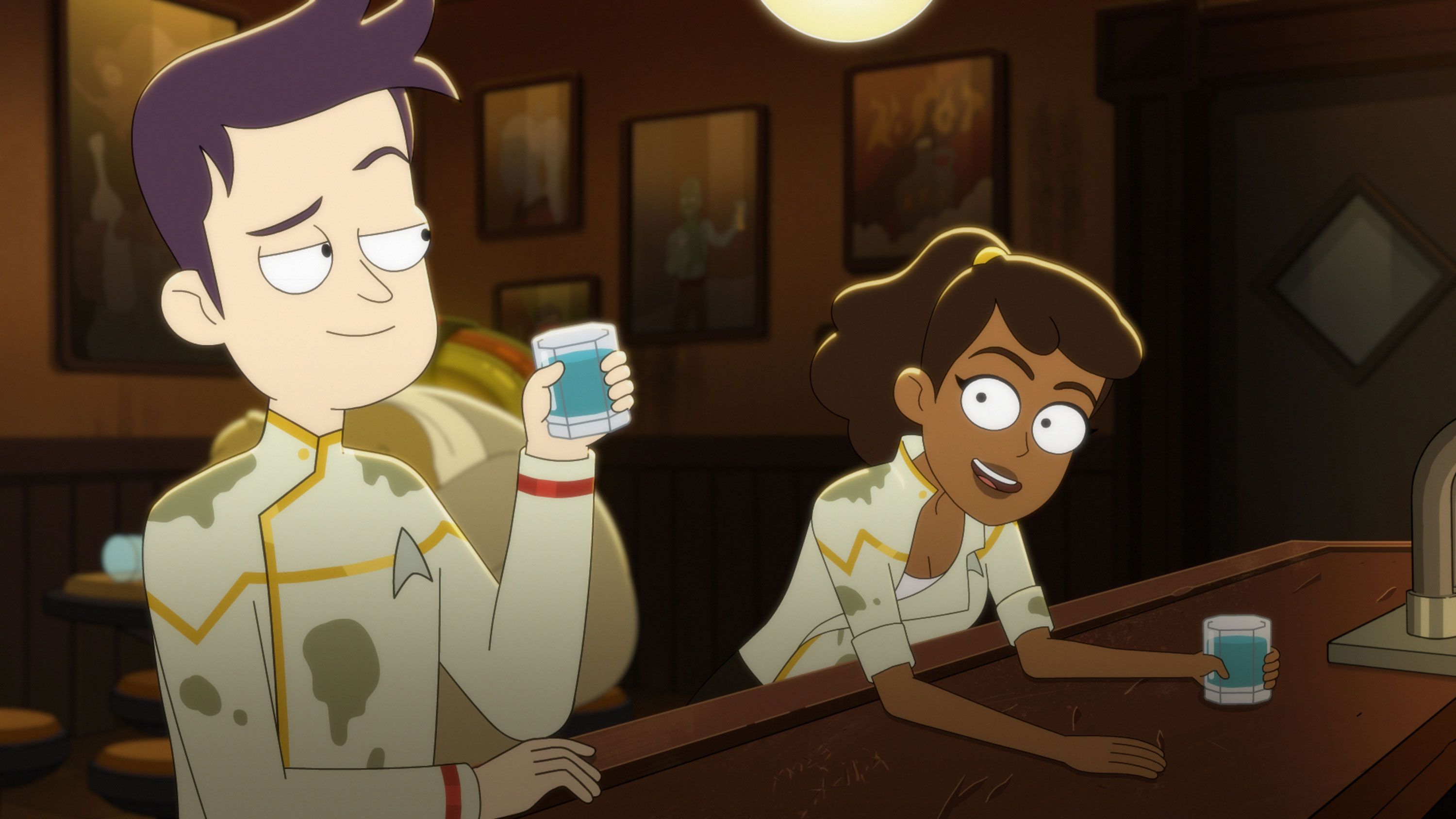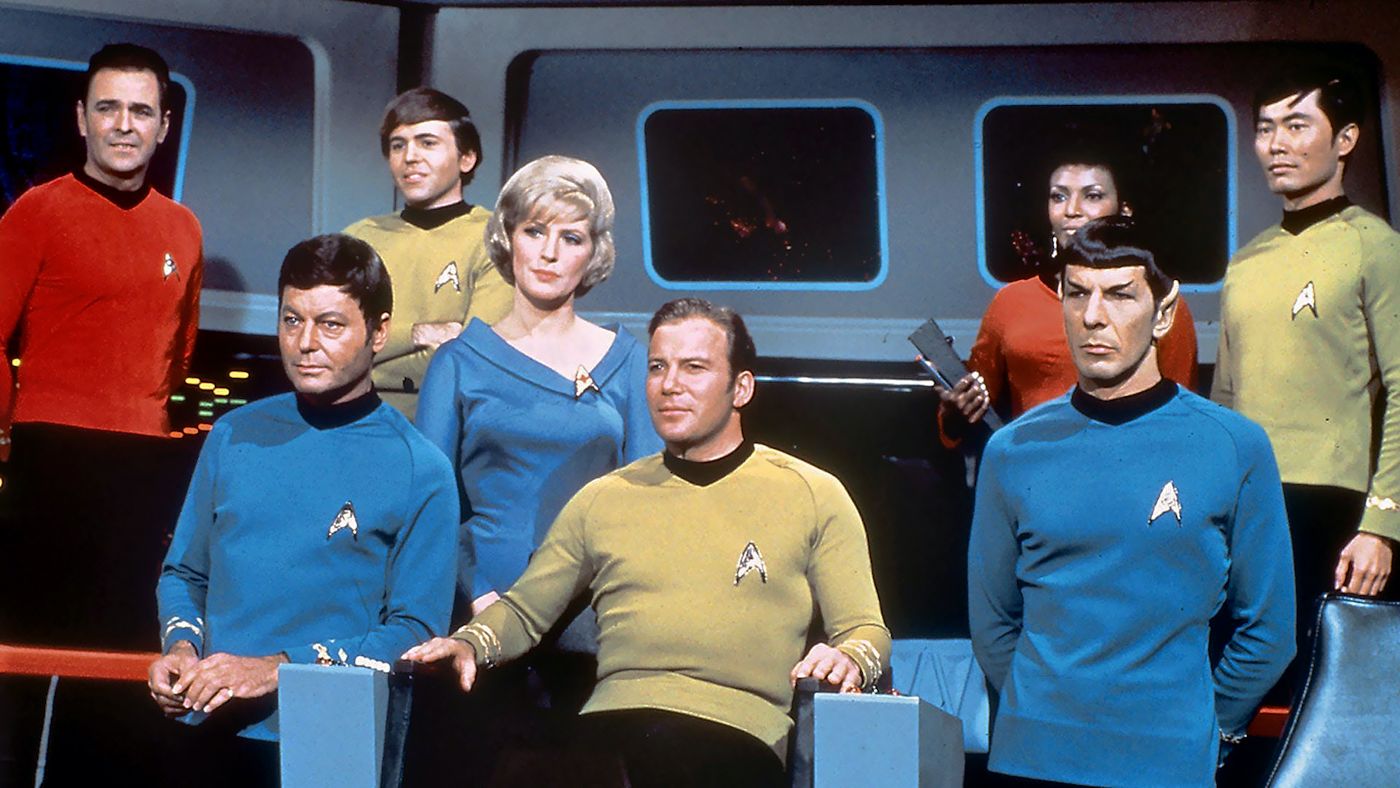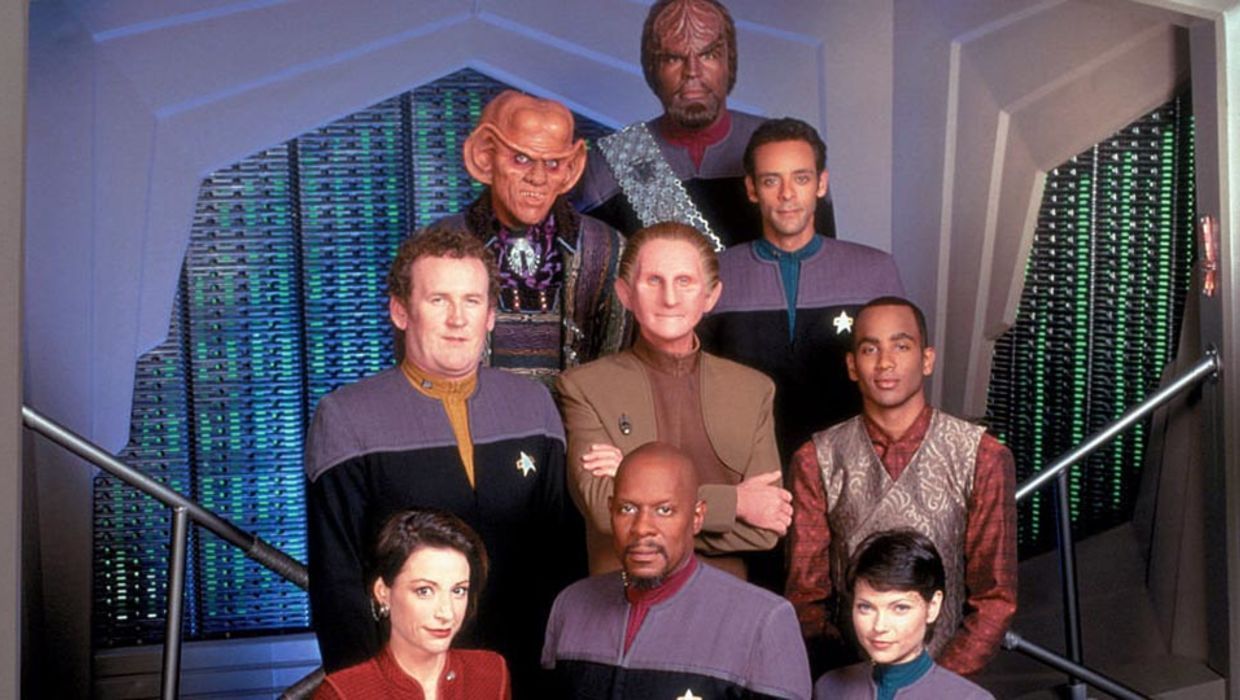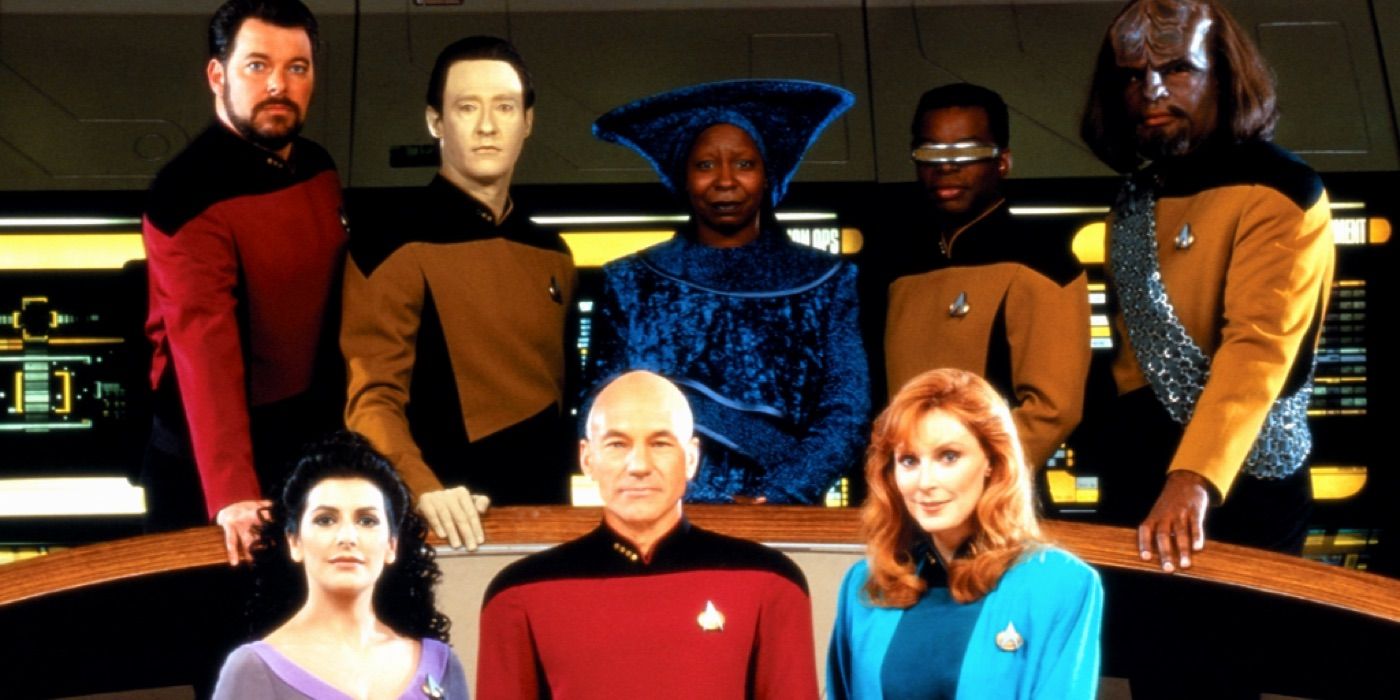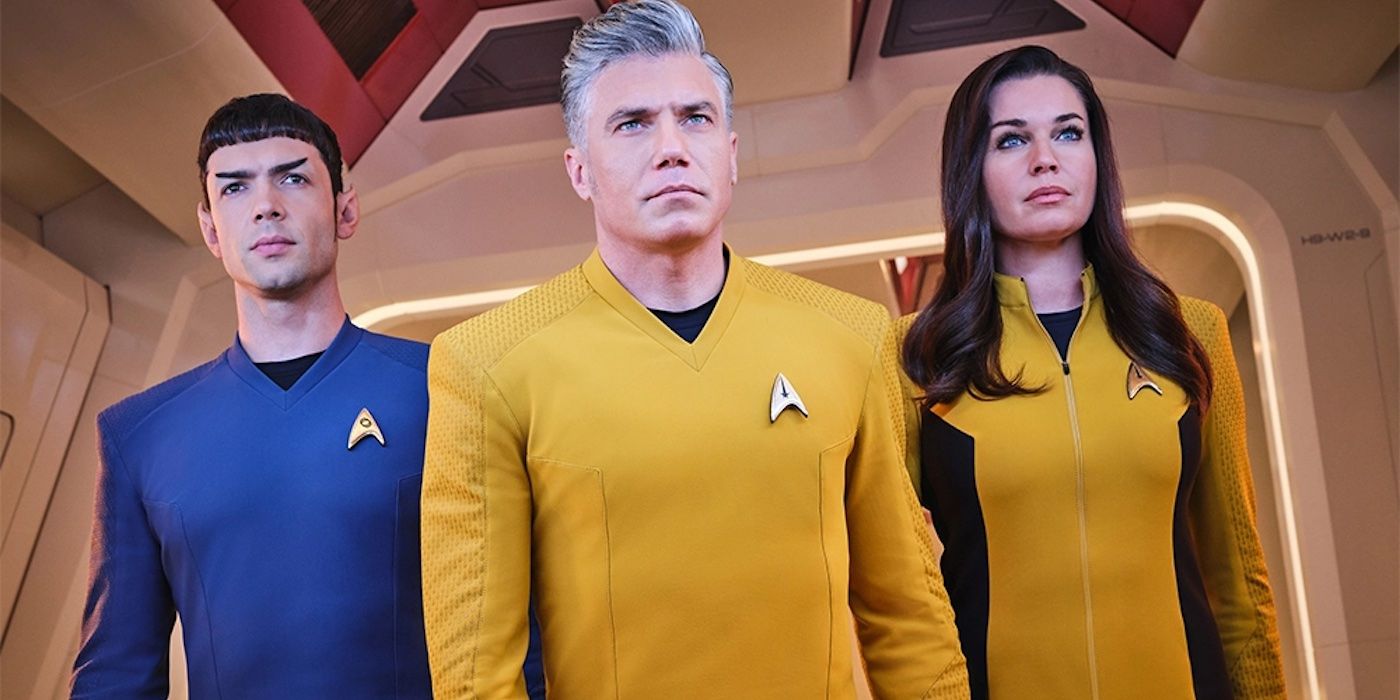Not so long ago, Star Trek fans faced a great drought—years without a new Star Trek show for fans to boldly go where no one had gone before. How times have changed! Now, the franchise has branched out to include kid-friendly show Star Trek: Prodigy. Star Trek: Discovery has been renewed for a fifth season. And Star Trek: Strange New Worlds has won over fans, old and new.
With so many shows expanding the franchise, we have to ask: how do the shows fare? We take a look at every major Star Trek show that’s aired so far and rank them based on merit. Let the arguments ensue!
12. Star Trek: Picard
Set 20 years after his last appearance, Star Trek: Picard follows an elderly Jean-Luc Picard (Sir Patrick Stewart) who bands together with a ragtag crew to right the wrongs of his past.
Picard is undoubtedly one of the most popular and famous characters in the franchise, and the show is at its best when the spotlight is on him. Sir Patrick and the rest of the returning cast all step back into their characters’ shoes like no time has passed at all. But most of the new entrants are rather dull and the villains uninspiring.
While Michelle Hurd brings a layered complexity to her under-baked character and Santiago Cabrera flexes his skills playing multiple personalities, the rest of the characters feel muddled. Surprisingly, the show is most successful when it leans into the nostalgic elements, and Picard continues to be an arresting figure.
11. Star Trek: Prodigy
In Star Trek: Prodigy, a motley crew of young aliens are thrown together after escaping a prison colony. They end up on a highly coveted ship, the Protostar, under the guidance of a holographic version of Captain Janeway (voiced by Kate Mulgrew).
The low ranking of Star Trek: Prodigy does not signify that something is wrong with this show. The animation is gorgeous, and the characters are unique. The youthful nature of the main cast brings with it an air of irreverence and rebellion. The show is a little darker than expected considering its target audience is children, but the stories border on hopefulness and camaraderie. However, the shortened runtime restricts the storytelling—the character development feels a little rushed and some plot lines need fleshing out. But the show remains a refreshing entry in the franchise because it’s outside the confines of the Alpha Quadrant and the Federation.
10. Star Trek: The Animated Series
Star Trek: The Animated Series continues the adventures of the Enterprise and its crew. The show kept the franchise alive in the 1970s, but its ambition outmatched the execution. Without the constraints of live-action, the two-season series was able to embrace the wackier and grander premises of the science-fiction genre.
However, the show does feel turgid and the animation is rudimentary. While most of the main cast from Star Trek: The Original Series returned to voice their characters (except for Walter Koenig because the creators ran out of budget), they rarely voice-acted together, and the disjointed acting is obvious in many episodes.
One of the major issues with TAS was that the show was created and aimed at a younger target audience yet didn’t appeal to them. But the show has plenty of intriguing storylines and concepts, including an episode where Uhura (Nichelle Nichols) captains the ship.
9. Star Trek: Enterprise
The last show before the drought, Star Trek: Enterprise follows the adventures of the first Enterprise crew. Positioned as a prequel, the show has rightfully garnered a ton of fans, but it still feels a little lackluster. Also, that theme song needed a lot of revision!
Due to its setting, the writers were bogged down correcting the continuity issues from the previous series. Some of the storytelling also feels regressive and out of place in the new millennium. The ship’s lack of advanced technology, especially the transporters, restricts the writing and slows down the pace. The characters are interesting and charming, especially the Mirror Universe versions. Scott Bakula as Captain Jonathan Archer cuts a striking figure, but the supporting cast’s charisma is inconsistent and sometimes underdone by their characterizations.
The show shines brightest when it embraces multi-arc storylines, but the change was too little too late. Enterprise was unceremoniously canceled before its time.
8. Star Trek: Short Treks
Star Trek: Short Treks is an anthology series set around the new Trek shows, though there are a few stories set in different eras.
Despite being only 10 episodes long over two seasons, Short Treks has a range of stories for all Trekkies to enjoy. The first season comprises two prequel stories of characters seen in Discovery while introducing new characters who would eventually join the show. The second season capitalizes on the fan-love for the USS Enterprise crew who appeared in Discovery Season 2. And there are a couple of animated shorts that expand the Star Trek universe further.
These bite-sized snippets not only give viewers a peek at the greater New Trek-verse, but they make for a perfect format to spotlight characters and arcs that would not have made it into the regular storylines. Short Treks is a thrilling new perspective into this beloved franchise.
7. Star Trek: Discovery
Star Trek: Discovery rang in a new phase in the franchise. Originally set years before the original series, the show cast a Black woman, Sonequa Martin-Green, in the lead, and peppers the cast with actors of color. If that isn’t all, Discovery became the first franchise show to introduce a gay couple in the main cast—Anthony Rapp and Wilson Cruz’s characters Paul Stamets and Hugh Culber—and has since broadened queer representation with the addition of a transgender actor, Ian Alexander, playing a transgender character, Gray Tal, and a non-binary actor, Blu del Barrio playing a non-binary character, Adira Tal. With every season, Discovery proves how effortless it can be to expand diversity in a franchise, all the while creating compelling stories and characters.
If there’s one criticism that can be levied on the show is its gloomy tone. Star Trek relies on a utopian outlook, but Discovery is often dark and pessimistic.
6. Star Trek: Voyager
USS Voyager is sent on a mission to retrieve a fugitive Maquis vessel when the ship is pulled into the Delta quadrant—seventy thousand light-years from home.
Star Trek: Voyager was unfairly maligned for too long and, looking back decades later, one can’t help but wonder if misogyny played a part in that. Voyager marks the first time a Star Trek show was headlined by a woman and had a female captain. Thankfully, better sense has prevailed and over the past few years, the show is getting a lot of love from fans and Star Trek creators alike. Without the safety net of the Federation, Voyager and her crew have to be innovative to survive, to collaborate and stick together.
Voyager isn’t a perfect show, but it has come in for extra scrutiny. Some of the writing may be inconsistent, but the characters are the MVPs. Each one has relatable characteristics that make them compelling to watch, and several story arcs are analogous to discussing one's identity, and surviving trauma.
5. Star Trek: Lower Decks
Star Trek has usually focused on larger-than-life characters—the movers and shakers of Starfleet. But what about the cadets, crewmen and ensigns who appear in the corners of frames? Well, we find out the secret life of those unnamed junior officers in Star Trek: Lower Decks. Set aboard the USS Cerritos, the show follows a group of four lower deckers as they bumble their way through every mission, chafing against the senior staff who have their own issues to resolve.
This is a hilarious, irreverent show, buoyed by a voice cast that’s obviously enjoying every minute of their job. The animation is in line with the modern age’s preferred adult animated comedies. Lower Decks works best when it leans into the Star Trek concepts that creator Mike McMahan is a vocal fan of. When it veers away from the lore and tries to be too bawdy and ‘out there’, the writing tends to suffer.
4. Star Trek: The Original Series
Way back in the 1960s, Gene Roddenberry had a vision that would eventually come to fruition in the form of Star Trek: The Original Series (then called Star Trek). It’s hard to imagine a world without Star Trek in it—despite low ratings during its three-season run, the show has become a cult classic and a mainstay in science-fiction history.
The show was a pioneering effort by Roddenberry—the utopian future it depicted combined with its take on an equal society irrespective of gender and race was a bold move. The adventures of the USS Enterprise are still enthralling and much of the political subtext painfully relevant. The central dynamic of the main trio continues to be one of the most engaging in pop culture.
While our collective nostalgic love for TOS remains, some of the show’s sensibilities feel dated now, especially the treatment of the female characters.
3. Star Trek: Deep Space Nine
Star Trek: Deep Space Nine took some time to take off. The first few seasons are episodic and many of the storylines are questionable. But once it finds its stride, Deep Space Nine takes on its own unique formula.
As the first Star Trek show to cast a Black actor in the lead, Avery Brooks, the show shook up the Star Trek formula from the get-go. The main setting is aboard a static space station and the main thrust of the story is the Federation’s peace-keeping efforts following the Cardassian invasion of Bajor. The final three seasons center mainly on the Federation war against the Gamma Quadrant power, the Dominion.
From the beginning, the show tackles heavy issues like racism, religion and the impact of war, and it also includes some queer elements that were missing from the franchise. The character interactions are a highlight in the series, as is the writing, especially in the latter half of the show’s run when the multi-arc episodes become tight and compelling.
2. Star Trek: The Next Generation
There’s just no arguing with the brilliant storylines and the impact of Picard on pop culture. Like many of its Star Trek counterparts, Star Trek: The Next Generation had an iffy start but found its groove soon after. The consistency of the writing, the high concept storytelling and the range of themes play a huge part in The Next Generation’s enduring legacy in the genre.
Sir Patrick Stewart as Picard is a real renaissance man—embodying the best of humanity as a captain and a friend while owning up to his errors. The expansive cast of characters all have their moment to shine, which is a change from The Original Series. The chemistry between the actors and their character dynamics is another reason we can’t help but tune in repeatedly. The show probes the meaning of being human with episodes like “I, Borg” and “Measure of a Man”. Star Trek truly matured with The Next Generation.
1. Star Trek: Strange New Worlds
Perfectly balancing the beloved episodic nature of Old Trek, while weaving in the inclusivity and modern sensibilities of New Trek, Star Trek: Strange New Worlds is a feast for the soul. Led by Anson Mount’s enigmatic and charming Captain Christopher Pike, the Enterprise is a ship that’s at the forefront of space exploration. But instead of being manned by a bunch of stuffed shirts, the crew of the ship is eccentric, with undercurrents that allude to complex backstories.
The show reimagines several characters from the original series, including T’Pring (Gia Sandhu), Nyota Uhura (Celia Rose Gooding), Christine Chapel (Jess Bush) and Joseph M’Benga (Babs Olusanmokun), giving them the spotlight that was missing in their original introductions. The new cast of characters is just as intriguing, with La'an Noonien-Singh (Christina Chong) adding a sense of moral drama to the proceedings, and Erica Ortegas (Melissa Navia) reveling in being a mysterious, scene-stealing personality.
The stories are compact, succinct, and juggle dramatic tension with levity, nostalgia, and action. You will end each episode feeling like a little kid who's watching Star Trek for the first time.

